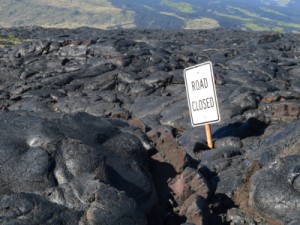 Shannon Colyer writes “I saw you speak two years ago with my then VP. (We have a new one now.) You advised us not to purchase a $150,000+ guided navigation program because you said that it wouldn’t fix our data problems. The VP (my then boss) thought you were nuts so we bought it anyway. Our whole ecommerce team agreed with your points but he vetoed us. Anyway, what you said would happen is exactly what happened and now we have a worse internal search function than we did before. Don’t even get me started about our navigation. I think it’s what you call a Polynesian Train Wreck! Our new VP is one of those hatchet types and won’t let us spend any more money to fix it until we ‘prove we know what we’re doing.’ What can we do? Do you have any suggestions? I understand if you think we’re too much of a lost cause at this point to help but any suggestions you have will be greatly appreciated.”
Shannon Colyer writes “I saw you speak two years ago with my then VP. (We have a new one now.) You advised us not to purchase a $150,000+ guided navigation program because you said that it wouldn’t fix our data problems. The VP (my then boss) thought you were nuts so we bought it anyway. Our whole ecommerce team agreed with your points but he vetoed us. Anyway, what you said would happen is exactly what happened and now we have a worse internal search function than we did before. Don’t even get me started about our navigation. I think it’s what you call a Polynesian Train Wreck! Our new VP is one of those hatchet types and won’t let us spend any more money to fix it until we ‘prove we know what we’re doing.’ What can we do? Do you have any suggestions? I understand if you think we’re too much of a lost cause at this point to help but any suggestions you have will be greatly appreciated.”
Dear Shannon:
So, let me get this straight. Rain Man was replaced by Chainsaw Al and your text search sucks? Is that right?
Not to worry, most sites have craptastic text search functions. You are not alone.
Here are some tips for you or anyone else whose text search function leaves a lot to be desired…
Focus on your top products, starting with the top 10%. Those are the things that people MUST be able to find so do whatever it is that you need to do to make that happen. (If you’re a company that doesn’t have products per se, do the same thing with your services or benefits.)
Make sure the most important stuff is found first. You have three items (or features) to prove that you know what you’re talking about. The first thing you show is, by far, the very most important. What does that mean? It means that you need to look at your top xx searches (my recommendation: start with the top 100) and look at the first item you see. If it’s not your bestseller (or the item you most want to sell), figure out how to change it. (Again, do this on your top products first.)
Spend more time perfecting your navigation. Solid C-navigation (top, bottom and left) takes a lot of pressure off your text search.
Make sure you’ve addressed The Word Connect. It seems simplistic but it will help you a lot and it will give you a totally new perspective on your users.
Bury your text search box. Yes, I know, this is NOT at all a popular recommendation, but if your text search stinks it’s worth, well, hiding it. Companies who sell search programs are the ones who’ve put out the majority of information about where your text search box should be. They almost always say to put it in the top righthand corner or middle column of your site. Why? Because this is where it gets used most. Sadly, what they don’t tell you is that whatever you put in the top righthand corner or middle column is going to get a lot of attention because those are two of the BIGGEST hot spots on your site. If your text search is weak, put it in the top lefthand column underneath your e-mail sign-up box. It will still be easy to access for your users but they won’t confuse you as a library not a bookstore & you’ll reduce the number of unsuccessful searches. (If you have the perfect search, put it in the top middle column.)
There are lots of other tips for improving your internal text search but those are the ones I’d start with. The key is to really look at what people are searching for on (and off) your site and then fix those results first. Your visitors will set the course if you let them. Even the worst of the internal text search packages usually takes care of the plurals and misspellings but a lot of times the other stuff takes a lot of manual tweaking. (Yes, that’s contrary to what they tell you.)
Have other tips for fixing a broken internal search? Add them in the comments below or e-mail them to me at info@amyafrica.com and I will add them to a future post!
P.S. And Shannon, Polynesian Train Wreck sites are those that look like the Easter Bunny threw up all over them. Next time, get the lingo straight ok?
Leave a Reply